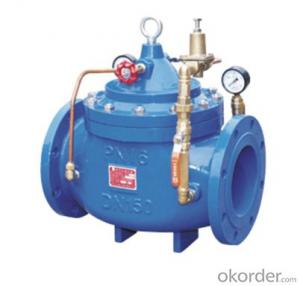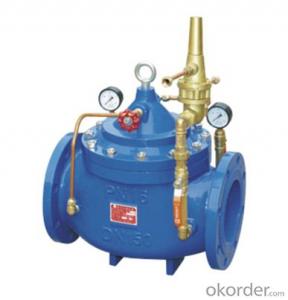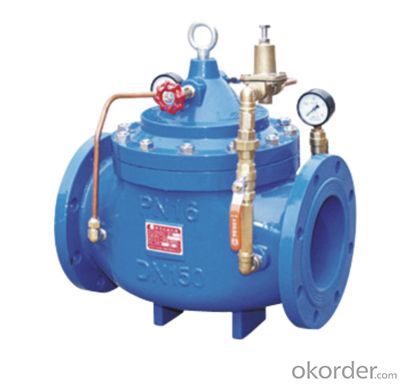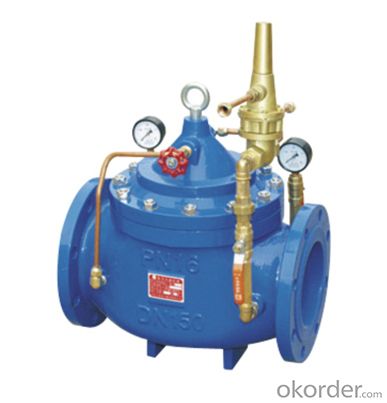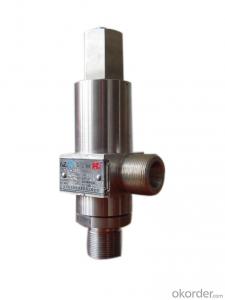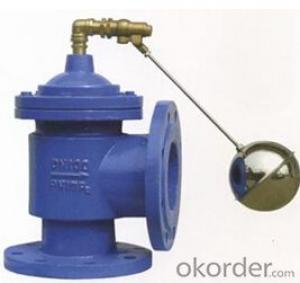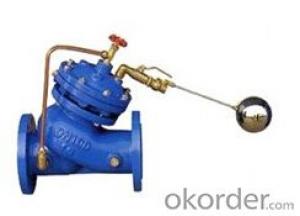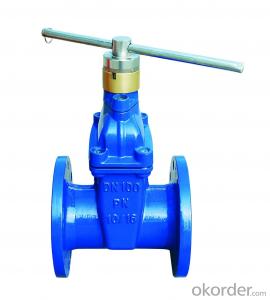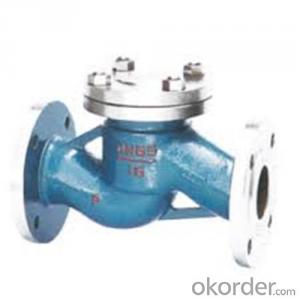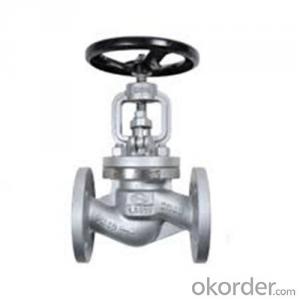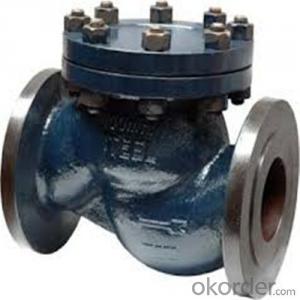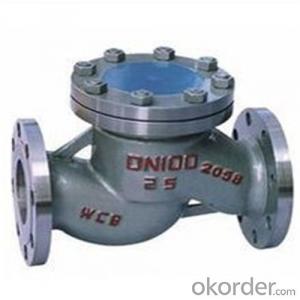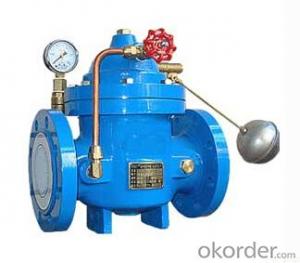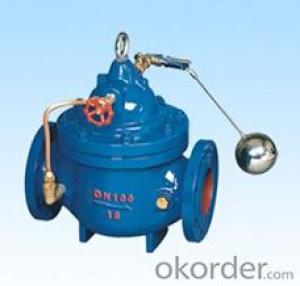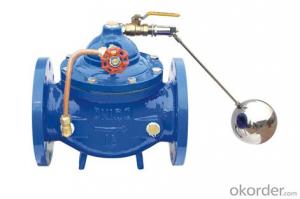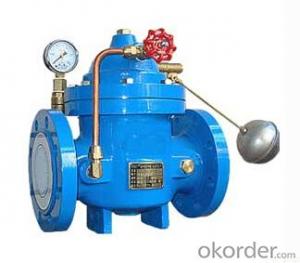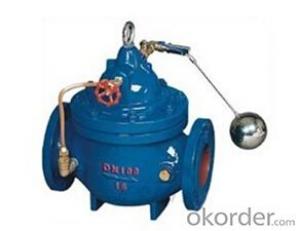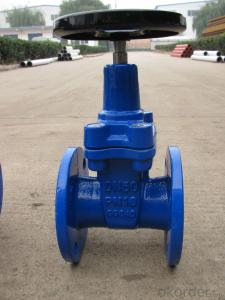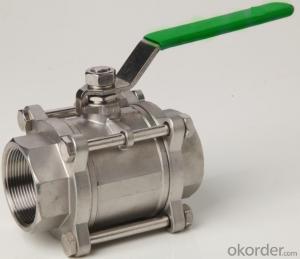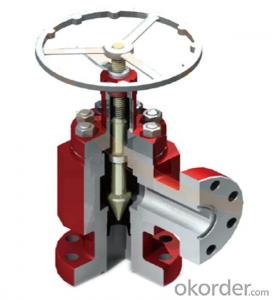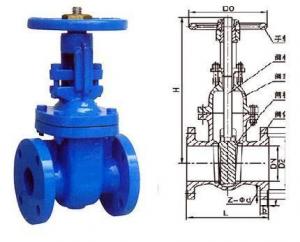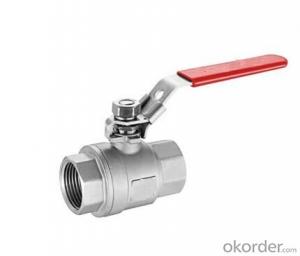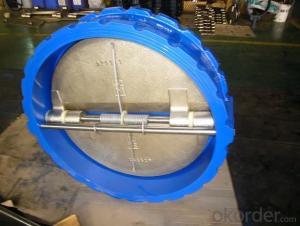DN250 Ductile Iron Remote control float valve BS Standard
- Loading Port:
- Tianjin
- Payment Terms:
- TT OR LC
- Min Order Qty:
- 1 set
- Supply Capability:
- 5000 set/month
OKorder Service Pledge
OKorder Financial Service
You Might Also Like


General valve using the market long-term, widespread Water Leakage, rust phenomenon, soft sealing gate valve produced by the introduction of foreign advanced technology of the enterprise. To overcome the poor sealing gate valve, general elastic fatigue, rust and other defects. Soft sealing gate valve is a traditional valve replacement products, the compensation effect of using flexible gate produce small deformation, achieve good sealing effect, the valve has a light switch, reliable sealing, good elastic memory and long service life and other significant advantages, can be widely used in water, sewage, construction, food, medicine, metallurgy, electric power, textile, energy systems, fluid pipeline regulation and closure devices as.
The characteristics of:
- flat style seat
The traditional control valve often pass after washing due to foreign objects such as stone, wood, cement, paper, and other debris deposited on the valve at the end of the groove. Close but not close easily lead to the formation of Water Leakage phenomenon, the lower part of the soft sealing gate valve with water using the same flat design, easy to siltation caused by debris, the fluid unimpeded.
And the overall package glue
The valve plate is made of high-quality rubber overall, the outsourcing of plastic, making the domestic first-class rubber vulcanization vulcanization after the valve plate to ensure accurate geometry, and the rubber and ductile iron gate is connected firmly, not easy to fall off and good elastic memory.
And corrosion resistance
The valve body adopts epoxy coating powder, can prevent the corrosion and rust, and can be used for sewage systems.
And not easy to break
Traditional cast iron garden gate often hit foreign objects, collision or overlap caused by the fracture phenomenon. Because the valve to switch to ductile iron, this is the case already significantly reduced.
Three "O" ring seal
As the valve stem with three "0" ring ring seal design, can reduce friction when the switch is greatly reduced, Water Leakage phenomenon and can cut off the water supply construction not replace sealing ring.
And help to drink
Due to the internal body to non-toxic epoxy resin coating, gate of the inner and outer surfaces are completely coated with rubber and can not rust or corrosion of water available to drink.
- Casting valve
Valve body casting, precise geometry makes the body without any internal finishing to ensure that the valve seal.
And light weight
The valve is made of ductile cast, lighter in weight than conventional gate weight about 20%-30%. Convenient installation and repair.
Overview:
General valve using the market long-term, widespread Water Leakage, rust phenomenon, soft sealing gate valve produced by the introduction of foreign advanced technology of the enterprise. To overcome the poor sealing gate valve, general elastic fatigue, rust and other defects. Soft sealing gate valve is a traditional valve replacement products, the compensation effect of using flexible gate produce small deformation, achieve good sealing effect, the valve has a light switch, reliable sealing, good elastic memory and long service life and other significant advantages, can be widely used in water, sewage, construction, food, medicine, metallurgy, electric power, textile, energy systems, fluid pipeline regulation and closure devices as.
The characteristics of:
- flat style seat
The traditional control valve often pass after washing due to foreign objects such as stone, wood, cement, paper, and other debris deposited on the valve at the end of the groove. Close but not close easily lead to the formation of Water Leakage phenomenon, the lower part of the soft sealing gate valve with water using the same flat design, easy to siltation caused by debris, the fluid unimpeded.
And the overall package glue
The valve plate is made of high-quality rubber overall, the outsourcing of plastic, making the domestic first-class rubber vulcanization vulcanization after the valve plate to ensure accurate geometry, and the rubber and ductile iron gate is connected firmly, not easy to fall off and good elastic memory.
And corrosion resistance
The valve body adopts epoxy coating powder, can prevent the corrosion and rust, and can be used for sewage systems.
And not easy to break
Traditional cast iron garden gate often hit foreign objects, collision or overlap caused by the fracture phenomenon. Because the valve to switch to ductile iron, this is the case already significantly reduced.
Three "O" ring seal
As the valve stem with three "0" ring ring seal design, can reduce friction when the switch is greatly reduced, Water Leakage phenomenon and can cut off the water supply construction not replace sealing ring.
And help to drink
Due to the internal body to non-toxic epoxy resin coating, gate of the inner and outer surfaces are completely coated with rubber and can not rust or corrosion of water available to drink.
- Casting valve
Valve body casting, precise geometry makes the body without any internal finishing to ensure that the valve seal.
And light weight
The valve is made of ductile cast, lighter in weight than conventional gate weight about 20%-30%. Convenient installation and repair.


- Q: hi i have mitral valve prolapse/dysautonomia. when i get chest pains, its when i try to breathe. like i can take a little breath but if i take more my chest hurts. used to be pretty scary. i understand dysautonomia, but know know why it hurts to breathe in my heart sometimes. please help!
- the pain can relate to dysautonomia if it is persisting for long, even it can be a pleuritic pain otherwise, talk to your doctor about it.
- Q: What is the easiest and best way to fix a leaking shut-off valve on a toilet?
- Replace it there fairly cheap.Usally all you need is a wrench an pipe thread tape and a new shut off valve bably less than 20 bucks total.Just turn off the water an flush the toilet.Place a pot under the connection so it will catch any remaining water as you loosen the connection.There are 2 large nuts at each end of the shut off valve.Turn them conter clockwise to loosen an clockwise to tighten.Wrap the threads with pipe thread tape on both ends before installing the new shut off.Its probably one of the easiest do it yourself plumbing jobs there is.Once you have the new shut off installed an tightened turn the water back on an check for leaks.If it is leaking you may have to tighten your connection a little more.Good luck,I hope this helps.
- Q: My pressure reducing valve has gone bad. This looks like a pretty simple change. My question is do i loosen the union nut first (after draining water line), then loosen the whole valve??? Then reverse to install??? Any info would be great....
- Yup. That's pretty much it. Loosen the union a little, unscrew the valve from the non union side, then take the union completely loose and remove the valve. Last thing is to remove the other half of the union from the pipe. Always use the complete new union that comes with the new pressure regulator.
- Q: whaT ARE THE SYMPTON OF A BAD EGR Valve Position Sensor loss of power ?1998 toyota camry v6
- Typically when those sensors start to go bad, the EGR valve doesn't modulate properly between open and closed. When that happens you usually notice a sort of fluttering in the power delivery, often when cruising at a set speed but sometimes also when accelerating as a result of the wrong amount of exhaust gas being recycled back into the engine. You sometimes will notice a loss of power when accelerating as well. If the EGR valve is opening more than necessary it will be allowing more exhaust gas back into the engine than is beneficial....and that will reduce the amount of power the engine produces. If the EGR valve is staying closed more than necessary, you might not notice as many driveability issues but you'll probably notice your average fuel mileage decreasing a little and/or a check-engine light being triggered and/or a failure of an emissions test (even if the check engine light hasn't tripped) if you live somewhere that emissions checks are required.
- Q: I did a compression test, and I have a broken valve. everything else is in perfect condition besides this valve and I have carbon getting built up in one of my pistons. Can I run the car like this? What cause this from happening what was the cause age?1999 Ford Explorer 4.0 OHV with 146k,miles
- you cant drive w/ a broken valve lying around in the engine. but yes you can drive w/ carbon build up, it causes the engine to run a lil warmer and prolly acts as a oil seal to the piston even after the rings go out.and youve ran a lot of gas thru in 12 yrs so carbon build up is normal,valves dont always break tho unless you were giving it hell an it jus seen so much wear an got thin an finally broke.mayb its not jammed into the head and its jus broke
- Q: what is a silicone purge valve.
- A purge valve is used when a system or object can sometimes be filled with unwanted substances during normal use, as a way to eliminate those substances without complete disassembly. A 'spit valve' (a kind of purge valve) is built into some musical instruments to allow getting rid of saliva which builds up inside during playing. Snorkels used for skindiving often have purge valves (some even made from silicone) to make clearing water easier. A purge valve may be used to drain occasional condensation from inside a gas line. If this is too general, please edit your question to add details.
- Q: In one of the two bathrooms - that we rarely used - I recently found that shower has now only hot water running. The valve is Moen brand with a single knob. On turning this, I get no cold water, but just hot water. I removed the knob, and decided to maybe replace the cartidge, but could not make any headway, after removing the acrylic knob. First, do I need to remove the cartridge?If yes, how? Is it possible to remove it without removing the back-plate glued to the Tile walls? Will appreciate detailed instructions to remove or fix the valve?thanks
- Moen, as well as many other brands have a feature that is cald a pressure balancer, or scald guard. Long story short, its so you don't burn yourself or freeze when some one flushes a toilet or the washing machine kicks in. You need to change it. Take off the handle, this may require and allen wrench to go in the bottom part of the handle, and then remove the front cover plate. Then take off the screw in the center of the valve. Remove the tube on the valve.( This should be a tube with a square notch at the top)Then remove the clip holding the cartridge. It has enough sticking out the top for you to grab it and pull it up. (Make sure your water is off) Then pull the cartridge out. Got a good grip and PULL. It doesn't always come out easy. Then replace it with a new one, and put it back together. Tada!!! Now Moen offers a lifetime warranty of parts, so it shouldn't cost you more then elbow grease. Find a local plumbing supply warehouse and they will give you a new cartridge for free, although they may require you to bring the old one first. Home depot or Lowes will not they will charge you 35-45 bucks. Hope this helps. Good Luck!!!!!
- Q: adjusting the overhead valves on briggs and stranton 14.5 engine
- Roll the engine over until the valve is completely closed. You can do this by watching the valve close, then turn the engine over until it just strats to raise. Now turn it back half way. Now losen the rocker arm and place a .003mm to .005mm filler gage between the push rod and the rocker. Tighten the rocker arm nut down so that the filler gage pulls out with a light drag. Do this with the other rocker and you are good to go.
- Q: I have a Tippmann A5 and I removed the gasline from the tombstone and when i went to put it back in the valve washer is in the way. Please help
- You examine your volecity with a chronograph your interior reach paintball shop would desire to have them, you additionally can purchase one on Ebay i would not propose a handheld get one you are able to set up on a tripod like a digicam. a diffusion chamber we could the liquid Co2 increase into gas to keep away from the liquid Co2 to circulate into your marker The low stress kit is designed for working Compressed air no longer co2 it enables with decreasing the the working stress of your marker so which you get greater cosistant photos use much less gas
- Q: i need exhaust valves material dimensinons of any car.
- Most valves are made of forged steel. The dimensions depend on what car. You can get a factory manual for any car. Call a motor shop to order them. Don't try to make them yourself.
Send your message to us
DN250 Ductile Iron Remote control float valve BS Standard
- Loading Port:
- Tianjin
- Payment Terms:
- TT OR LC
- Min Order Qty:
- 1 set
- Supply Capability:
- 5000 set/month
OKorder Service Pledge
OKorder Financial Service
Similar products
Hot products
Hot Searches
Related keywords
